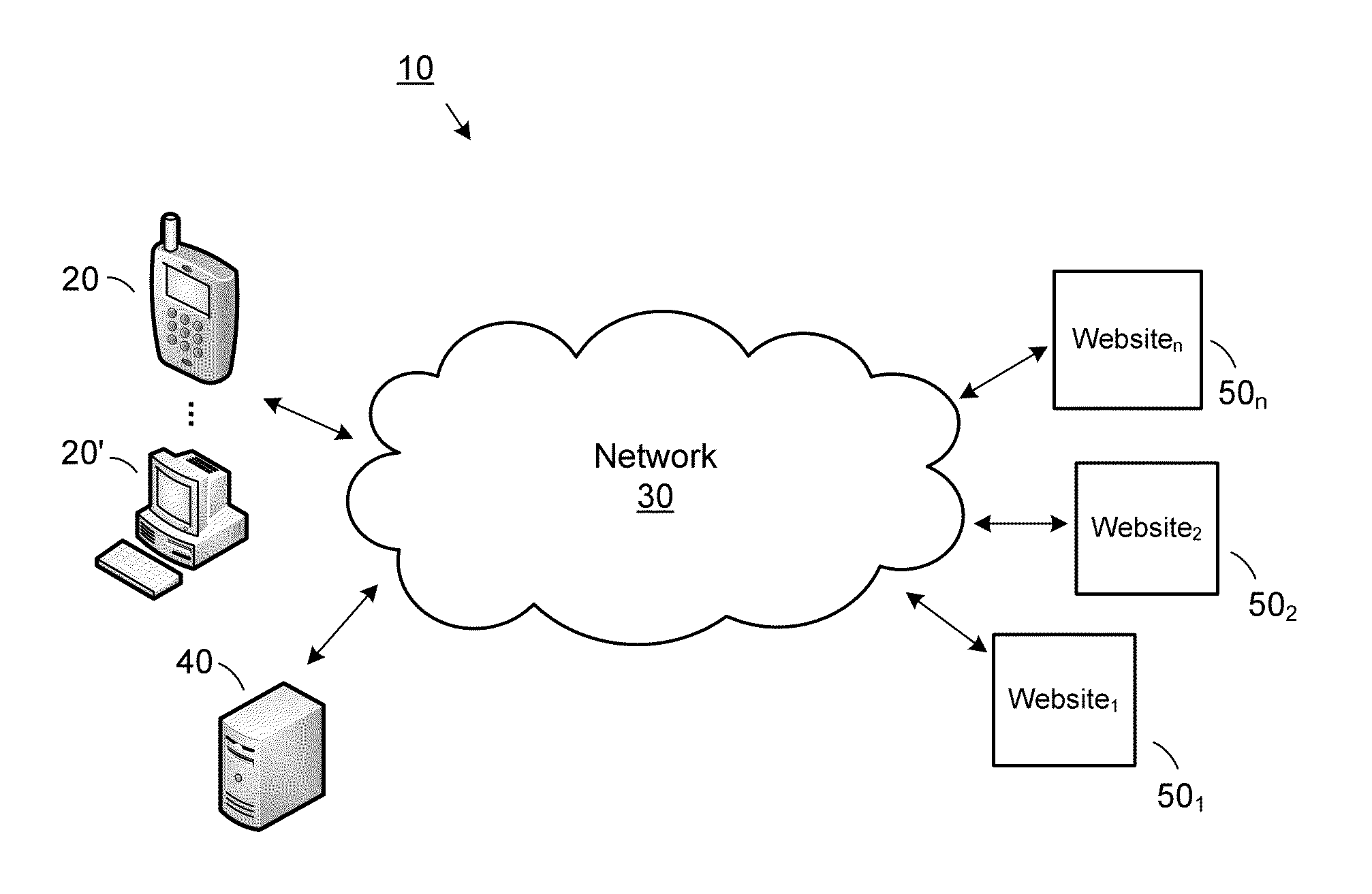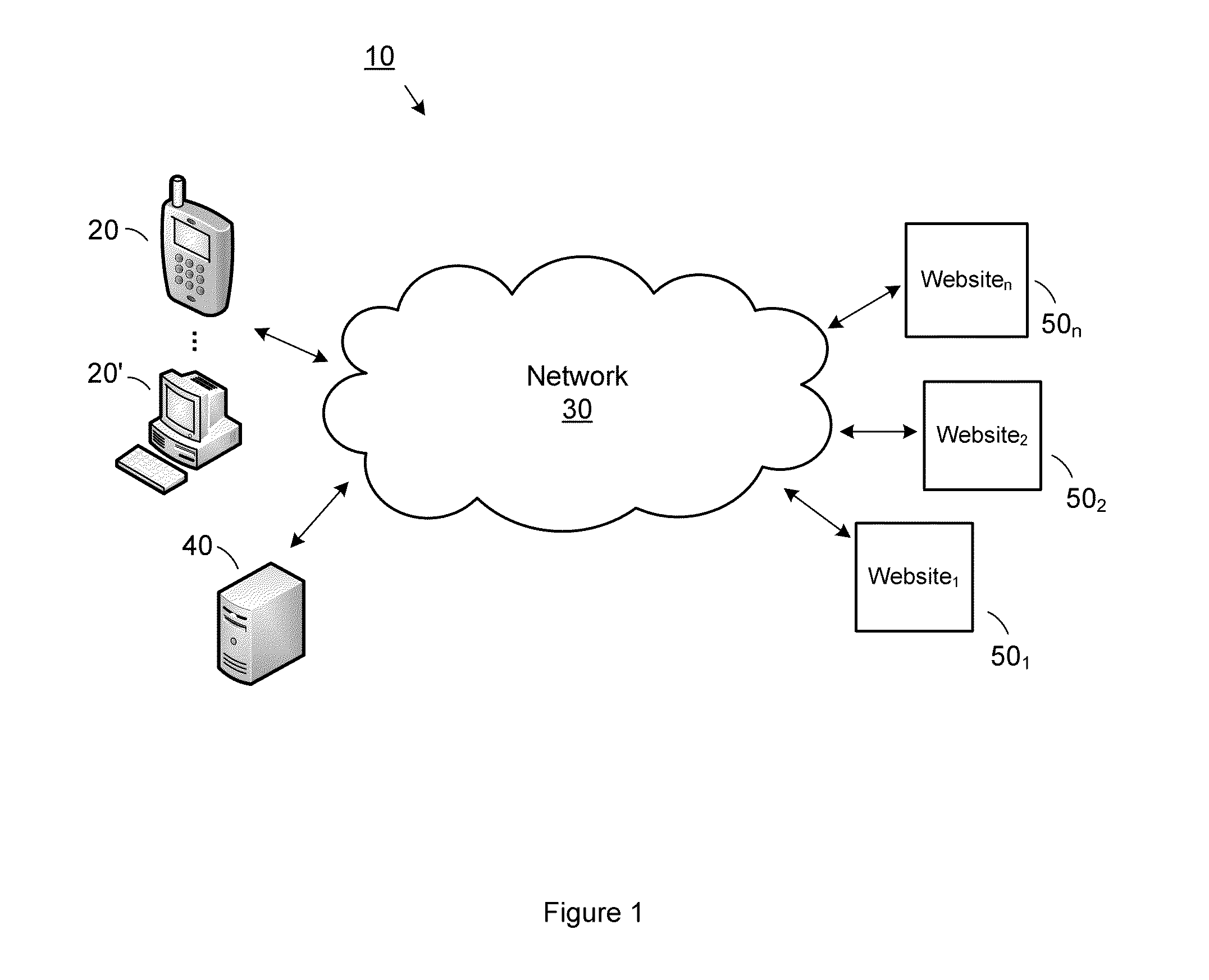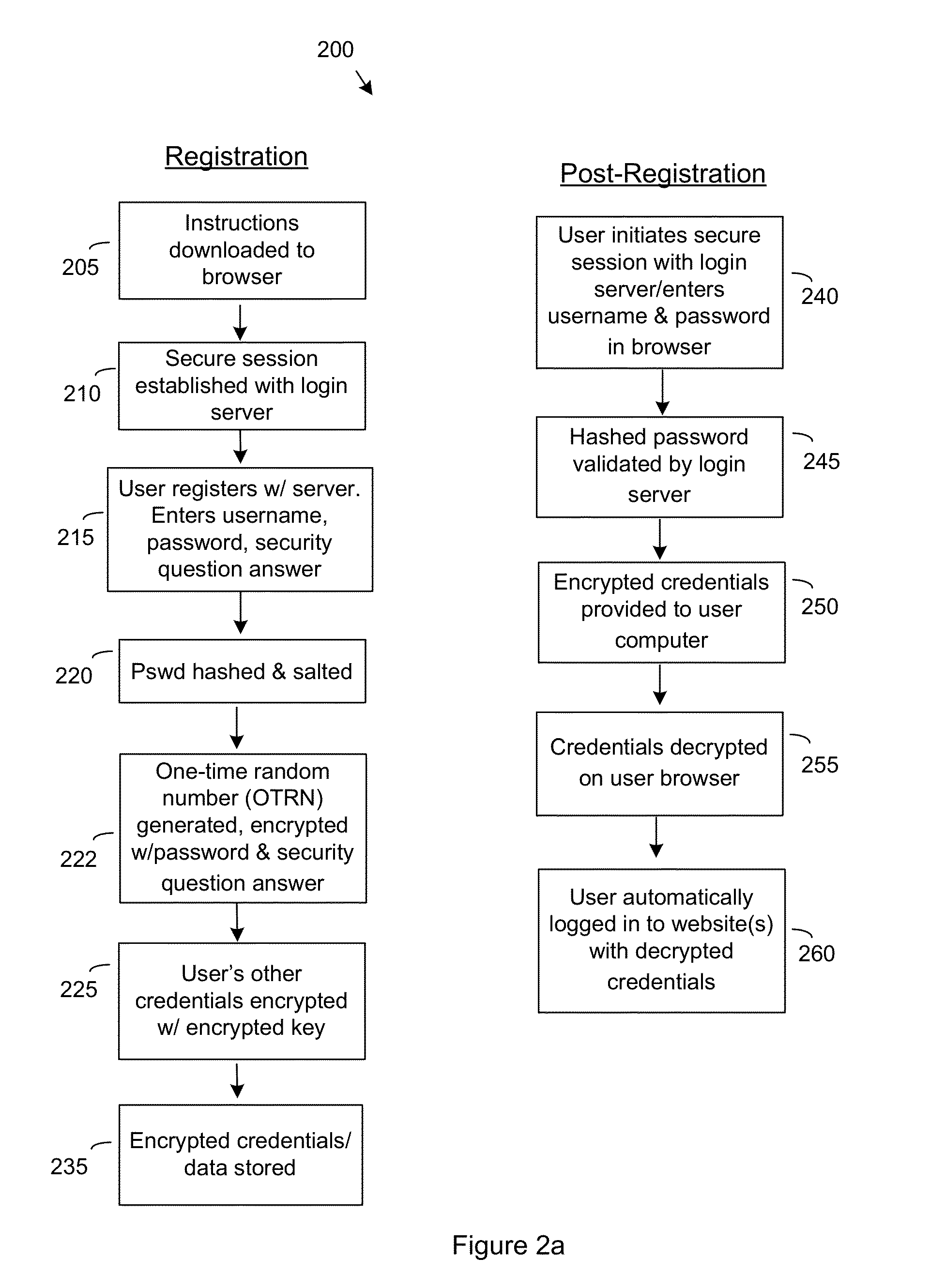Methods for single signon (SSO) using decentralized password and credential management
a single signon and credential management technology, applied in the field of secure digital communication, to achieve the effect of improving security and reducing the barriers for hackers and malicious users to access large amounts of data
- Summary
- Abstract
- Description
- Claims
- Application Information
AI Technical Summary
Benefits of technology
Problems solved by technology
Method used
Image
Examples
Embodiment Construction
[0030]Reference will now be made in detail to various exemplary embodiments of the invention, examples of which are illustrated in the accompanying drawings. The following detailed description describes certain embodiments of the invention, and should not be considered as limiting the invention to those embodiments. In addition, it is understood that “a” refers to one, or more; and that the terms “user device” and “user computer” are referenced interchangeably. It is further appreciated that “user computer” or “user device” also encompasses background processes, webservices, etc. that can perform single sign-on and is therefore not limited to single sign-on for individuals.
[0031]Turning now to the figures, which depict various exemplary embodiments of the invention, FIG. 1 shows a block diagram of an exemplary system in which the present disclosure may be practiced (as designated by reference numeral 10). As illustrated, the system comprises a user computer 20 communatively coupled ...
PUM
 Login to View More
Login to View More Abstract
Description
Claims
Application Information
 Login to View More
Login to View More - R&D
- Intellectual Property
- Life Sciences
- Materials
- Tech Scout
- Unparalleled Data Quality
- Higher Quality Content
- 60% Fewer Hallucinations
Browse by: Latest US Patents, China's latest patents, Technical Efficacy Thesaurus, Application Domain, Technology Topic, Popular Technical Reports.
© 2025 PatSnap. All rights reserved.Legal|Privacy policy|Modern Slavery Act Transparency Statement|Sitemap|About US| Contact US: help@patsnap.com



